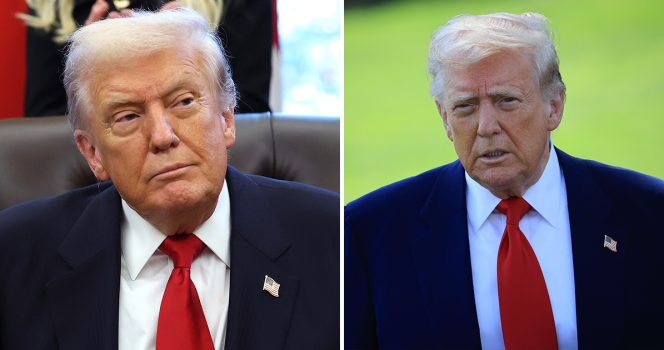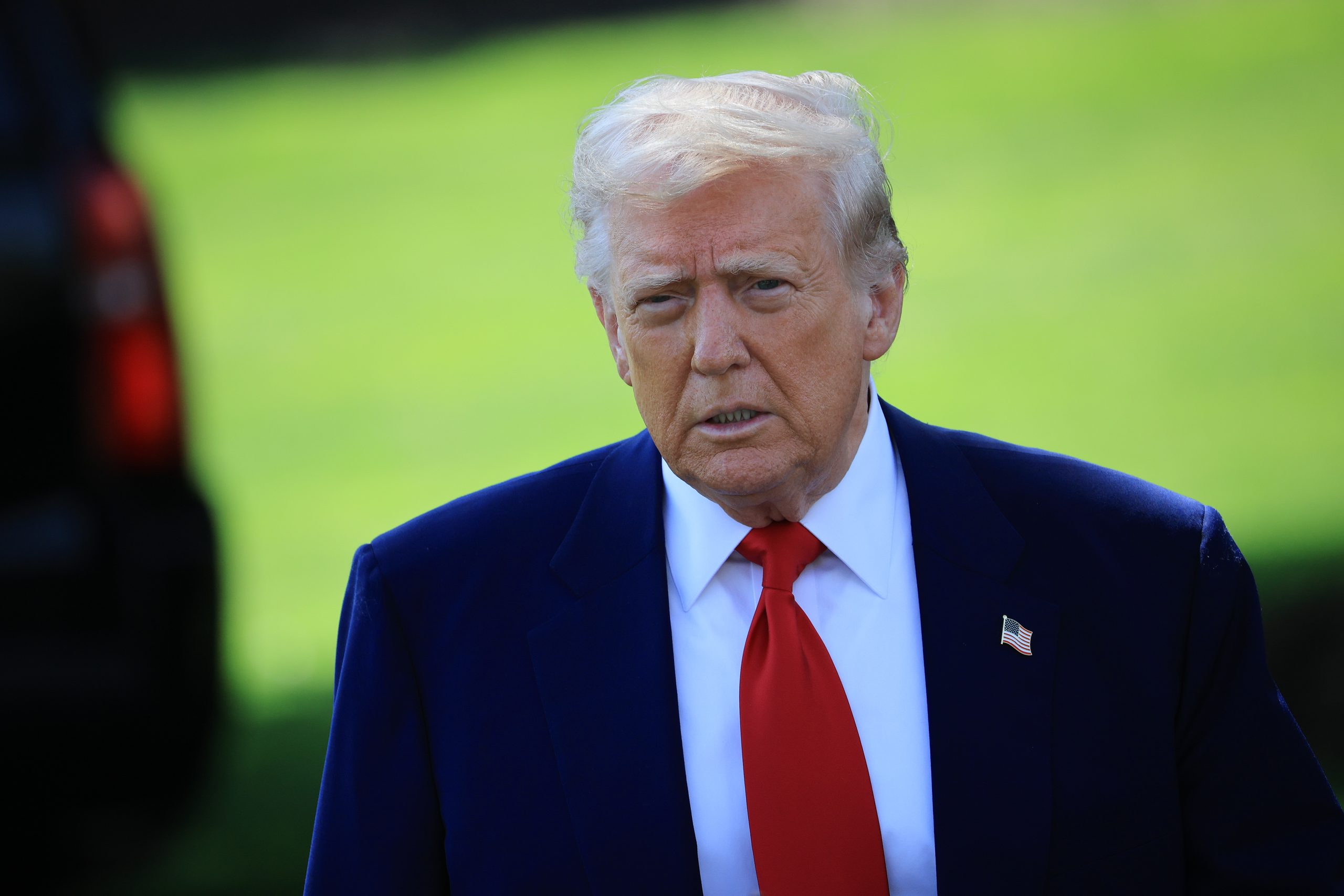
President Donald Trump is no stranger to bold promises, but his latest pledge – $2,000 tariff rebate checks for everyday Americans – is already shaping up to be another broken one.
Despite boasting that “hundreds of billions” in tariff revenue would fund the payments next year, experts say the math isn’t mathing, the legal risks are high, and Congress isn’t likely to back the plan.
President Trump has raised hopes among working and middle-class Americans feeling squeezed by inflation: $2,000 dividend checks, funded by tariff revenue, to be delivered sometime next year.
“People that are against Tariffs are FOOLS! We are now the richest, most respected country in the world, with almost no inflation, and a record stock market price,” the POTUS crowed Nov. 9 on Truth Social. “A dividend of at least $2000 a person (not including high income people!) will be paid to everyone.”
But Bob Elliott, CEO and chief investment officer at alternative investment firm Unlimited, told CNN that the president’s social media posts can’t always be trusted.
“We’ve learned that late night Truth Socials are not a direct line to reality,” Elliott said.

‘Highly unlikely’
During a recent appearance, Trump repeated his commitment to the rebate checks: “We’ve taken in hundreds of billions of dollars in tariff money,” Trump said. “We’re going to be issuing dividends…probably the middle of next year, a little bit later than that, of thousands of dollars for individuals of moderate income, middle income.”
But despite his repeated assurances, there are growing signs that the checks may never materialize.
“It’s highly unlikely there is some sort of stimulus check sent out next year. I would be pretty shocked,” Scott Lincicome, vice president of general economics at the Cato Institute, told CNN.
Math isn’t mathing
While tariffs are bringing in revenue, they likely aren’t enough to support such a sweeping payout. According to the Tax Foundation, Trump’s new tariffs are projected to raise about $158.4 billion in 2025 and another $207.5 billion in 2026, according to the Tax Foundation.
But the cost of sending out the proposed dividend checks would far exceed that revenue. In one modeled scenario – distributing $2,000 checks to tax filers and their spouses, with a $100,000 income cap – the cost would total approximately $279.8 billion. That’s $121 billion more than 2025’s expected tariff revenue.
Another scenario that includes non-filers and dependents would cost as much as $606.8 billion – nearly double the projected revenue from new tariffs over the next two years.
“This is like the magic money tree. You just go to it anytime you need money. Of course, that’s not reality,” Lincicome said.
This poses a problem, as the Trump administration has already indicated that tariff revenue will help fund other priorities, including tax reforms enacted earlier this year.
But, the Tax Foundation reports that “sending out ‘tariff dividends’ in 2026 would leave no revenue to offset the cost of tax cuts or reduce the deficit in the near term…A better way to provide relief from the burden of tariffs would be to eliminate the tariffs.”
Political resistance
Even if the funds existed, Trump would still need congressional approval to send out rebate checks. That’s not guaranteed.
Budget watchers, already hesitant about recent spending packages, are unlikely to support a move that would increase the deficit by hundreds of billions of dollars.
“I find it extremely implausible that Republican budget hawks are just going to be okay with blowing another $300 billion to $600 billion,” Lincicome added.
With the national debt surpassing $38 trillion – after hitting $34 trillion in January 2024 – many lawmakers are wary of any new spending, especially in a pre-election environment.
Economic risks
Though $2,000 checks would likely be welcomed by many households dealing with high grocery bills, rent, and car insurance, economists warn that such payments could worsen inflation.
“Sending out checks to people is a bad way to stimulate the economy,” said Stephen Moore, a former Trump economic adviser and co-founder of Unleash Prosperity, in an email to CNN. “If there is tariff revenue, that should be used to cut income taxes across the board. Stimulus checks only stimulate inflation.”
During the COVID-19 pandemic, similar direct payments were blamed for overheating the economy.
Legal uncertainty
In addition to economic and political challenges, Trump’s dividend plan faces legal jeopardy. The U.S. Supreme Court is reviewing whether the global tariffs imposed under emergency powers are constitutional. During recent arguments, most justices appeared skeptical, saying his claims “seemed to be misfit,” CNN reports.
That review could affect about 75% of the new tariff revenue Trump is relying on, according to the Tax Foundation
“If the Supreme Court says the bulk of the tariffs are illegal, that could throw a wrench in the tariff rebate plan,” Erica York, vice president of federal tax policy at the Tax Foundation, told CNN.
‘Break-the-glass’ tool
At this point, many economists say the only likely scenario where Trump’s $2,000 dividend checks become reality is if the U.S. economy takes a serious downturn.
If the job market weakens and unemployment rises sharply, the White House could justify direct payments as a recession-fighting measure.
“It’s almost like we shouldn’t want stimulus checks to happen,” Ed Mills, Washington policy analyst, shared with CNN. “Because it would be an indicator of something wrong. This is a break-the-glass, use in case of emergency tool.”
But until that “break-the-glass” moment arrives, the checks will likely remain more of a talking point than an actionable policy.
What are your thoughts on Trump’s most recent promise? Please let us know what you think and then share this story with others so we can hear from them!
READ MORE
- Jeffrey Epstein’s brother makes bombshell claim about Trump and the Epstein files
- Trump claims he’s ‘not a sleeper’ despite being seen ‘passed out’ in chair during meeting




